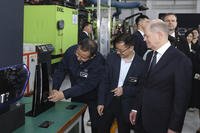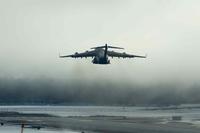CSIS’s Anthony Cordesman recently returned from Afghanistan where he was part of a team of experts brought in by new Afghan commander Gen. Stanley McChrystal to help craft a new strategy to arrest the downward slide in the war there. McChrystal will lay out his new strategy, expected to include a request for more troops, some time next month.
It’s refreshing to see the Obama administration encourage the participants in this strategy review to speak publicly, as opposed to the shroud of secrecy that accompanied any internal reviews conducted during the Iraq war. Andrew Exum, from CNAS, spoke to Charlie Rose the other day, Stephen Biddle, from the Council on Foreign Relations, speaks to reporters today, both were also on the strategy review team. Cordesman provided his take on what needs to be done to a group of Washington reporters yesterday (transcript and video here).
Cordesman’s overall take is that U.S. and NATO strategy in Afghanistan must go far beyond what the U.S. public and policymakers, their views colored by the Iraq war, consider counterinsurgency. Afghanistan is an exercise in armed nation building, rather than just a “counter-“ insurgency that seeks to beat back the Taliban. Iraq, a functioning modern state, had the framework, socially and institutionally, upon which to rebuild. In Afghanistan, that framework simply does not exist, not at the national and certainly not at the local level. The basic task there is to build some semblance of a state from the bottom up.
Counterinsurgency proponents talk a lot about the softer development and political aspects of counterinsurgency. But U.S. government counterinsurgency is almost wholly a military effort. As Cordesman said, so far - although this should change when McChrystal and his team lay out their strategy - there is no “meaningful campaign plan,” and little unity of effort between the military-security side and the civilian-economic development side. Instead, it is a “dysfunctional, wasteful mess focused on Kabul and crippled by bureaucratic divisions.” Creating a coordinated civil-military effort that includes the U.S., NATO as well as the UN and the development community, is job one.
Reversing the downward slide in Afghanistan will require lots more U.S. troops and a “very substantial” increase in spending. The Afghan security forces must be doubled in size, corruption at all levels of the Afghan government must be addressed, somehow a way must be found to increase NATO participation and then there is the problem of Pakistan, for which nobody really seems to have any answers.
What Cordesman had to say about our intelligence on the Taliban I though particularly important. He said the U.S. should refocus intelligence away from “simply finding threat forces in the field and defeating them” to understanding the “nature” of the insurgency. He called a recent Pentagon report on the insurgency “rubbish,” overly focused on the “kinetic” aspects of the war and not enough on answering the question of why Taliban influence is spreading throughout the country.
The reason, Cordesman said, is the almost complete lack of government structure at the local level, the only level that matters to most Afghans. Local government is seen as corrupt, abusive and as not serving the interests of the Afghan people. The Taliban at least provide some form of authority and, importantly, legal accountability, even if it’s their own harsh system.
As Cordesman said, the U.S. military can clear the Taliban from most any area, but at some point the Marines will leave Helmand; something must be left in their place. This is the biggest challenge we face in Afghanistan, I believe, and it’s a point Jeffrey Race made in his outstanding book on the counterinsurgency effort in Vietnam, War Comes to Long An. In Afghanistan, the problem is there must be something to “fill the hole” once the insurgents are defeated and the "shadow government" cleared from a village. We never came up with that “something” in Vietnam, Race contends, and so the effort there ultimately failed.
The U.S. faces the very same problem in Afghanistan. Any time U.S. forces clear and then leave an area, they create a vacuum that is promptly filled by the Taliban. Cordesman said the short term answer is to beef up the Afghan security forces. Longer term is hope the Afghans eventually develop governance capacity at the village, district and provincial level.







